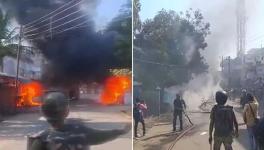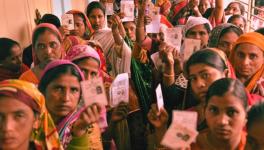COVID-19: What Exactly is the Mumbai Model Countering the Pandemic?
Nesco Jumbo Covid centre. Picture Credit: BMC
During a hearing on the Centre's appeal against the Delhi HC mulling contempt charges against officials, Supreme Court Justice D.Y. Chandrachud suggested that officials in Delhi get in touch with their Mumbai counterparts. "What we see in media that Bombay municipal corporation has done some remarkable work. Not disrespecting Delhi but we can maybe see what was done by BMC (sic)," he said. Chadrachud. The remark has come as a shot in the arm for the Shiv Sena in Maharashtra, in-charge of Mumbai as well as the state. It comes at a time when the entire BJP machinery was focused on blaming the state for a second wave a month back.
But what exactly has Mumbai done that abled it to flatten the COVID-19 curve? Newsclick spoke to a number of officials and politicians in the BMC as well as the state government to get an inside story.
"The most important thing about Mumbai is that the systems are already in place here; from testing to hospitalisation, we have worked hard over a year to build a proper system," said Suresh Kakani, additional municipal commissioner of the Brihanmumbai Municipal Corporation (BMC), a man who has been at work round the clock behind the scenes.
Mumbai had been witnessing a surge of COVID-19 cases in the beginning of April this year. On April 4, the cases registered were 11,206. It was challenge for the city as well as state administration. Last year Mumbai and suburban cities had seen a constant spike in numbers. Officials did not want a repeat of the scenario. To break this chain, the Maharashtra government resorted to quick decision-making. A strict lockdown was announced in Mumbai, initially just for a weekend. But, by April 14, the state announced a complete lockdown. The move primarily broke the chain of virus spread.
But that was not enough. Managing a city which officially houses over one crore 40 lakh people was tough.
"We have been aggressive in testing. There are fever clinics all over Mumbai. If somebody feels feverish, they can immediately go to a clinic and get themselves checked. It all begins there," said Amey Ghole, former chairman of the BMC's health committee. The clinics are mainly located inthe slum and chawl areas. With both kinds localities being congested the fever clinics work effectively to trace patients.
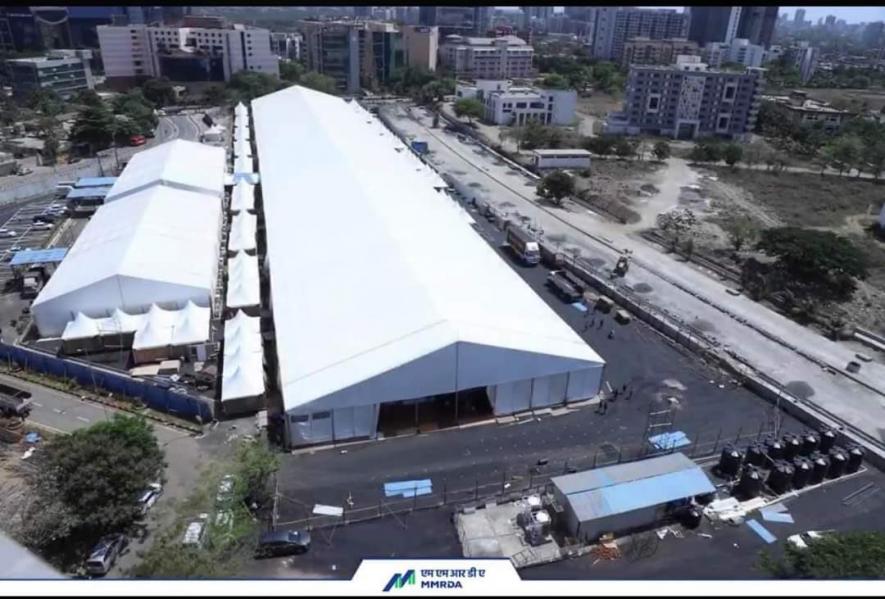
Another similar covid centre in making at Nesco ground Goregaon. Picture Credit : BMC
Once a patient report is handy, the ward office comes into the picture. This is even in case of private pathology serives. Many from the upper and middle classes resort to private labs for RT-PCR tests. "We have instructed all labs to immediately send the reports of COVID-19 patients with phone number and address to us. It is so that our concerned ward offices, which are alert 24X7, can speak to patients quickly," said Kakani.
The ward office decides whether patients need to be admitted to a hospital can be quarantined at home. "In this second wave, the BMC has strictly followed the policy of home quarantine for asymptomatic patients. On a number of occasions those that are well-off directly go to hospitals even if they don't have symptoms. That creates a scarcity of beds," said senior journalist Pandurang Mhaske, who has been documenting the BMC's COVID-19 work extensively.
Even while under home quarantine, the BMC has ensured that the patient receives one call from ward office everyday. They are asked about any symptoms, oxygen levels and fever. Officials also inform the society where the patient stays.
The BMC has also created a network of such housing societies. Every single society is directly connected to ward offices. "The numbers of secretaries of all societies are registered with ward offices. So, if any society finds a new patient, they inform the ward office or vice versa," said Kakani. This helps in creating containment zones, in sanitising the area as well as making people conscious about their movements. This also helps the BMC to keep a record of area-wise patients. "If we found more patients coming from a certain area, we go for aggressive testing. It helps to trace the spread of COVID-19 and also to alert the people," said Ghole.
The BMC has created a dashboard for patients who wish to be admitted. It is where one can check details of ICU beds, ventilator beds, Oxygen beds and normal beds for admission to private as well as government hospitals and also of COVID care centres. Generally, a ward office calls the patient. If the patient wants admission to a private hospital, the ward office checks for one near their house. Each private hospital treating COVID-19 patients has one dedicated BMC official for such processes.
"We have been trying to be transparent since the beginning, whether it is the number of patients, deaths or those treated. We do not hide anything. One can't win this battle by hiding things," said Mumbai Mayor Kishori Pednekar.
Mumbai currently has four jumbo COVID centres. At the same time, all the BMC hospitals are treating COVID-19 patients. BMC has already sanctioned four more jumbo centres in anticipation of a third wave in July-August. "We will keep no stone unturned in preventing a third wave in Mumbai," said Pednekar.
There is another dashboard of patients admitted to BMC hospitals or COVID centres. Here, the patient gets a user ID and password. All their tests, X-rays or other such treatments are mentioned on this dashboard with the patient or their relatives able to check such documents by logging on to it. Test reports as well as X-ray reports can be downloaded from here so that relatives can consult with their family doctors if needed.
Oxygen supply was a serious problem in Mumbai too. But, over a year, it had learnt a lesson. As COVID-19 patients increase, the BMC starts coordinating with all hospitals regarding other operations. "All operations need Oxygen. So, we postpone all possible operations. Only those who need urgent attention are allowed to be operated upon. We speak to relatives of such patients. This saves lots of oxygen," said Ghole. The BMC has also started work to build new oxygen plants at every hospital. KEM hospital in Parel had an old Oxygen plant and the BMC revived it for use. "Tenders have been floated to raise more plants. This is for preparation ahead of a third wave," said Yashwant Jadhav, chairman of standing committee.
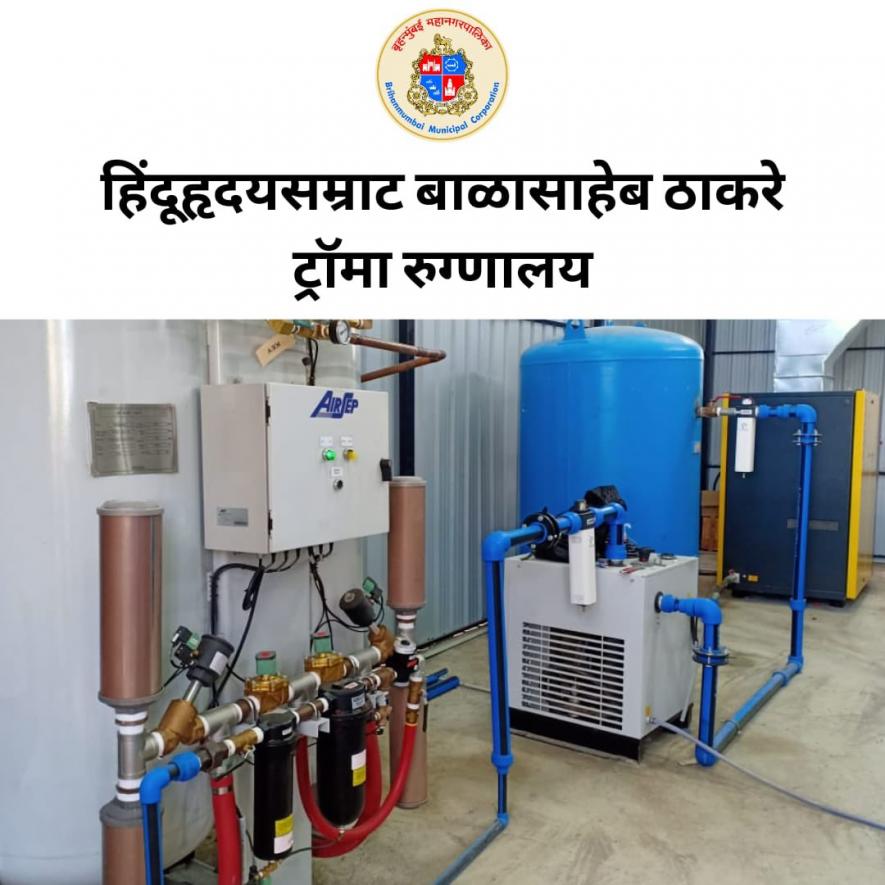
Oxygen plant at one of the BMC hospitals.
The BMC has also created a dashboard for crematoriums which provides real-time idea of all crematoriums. It is so that people do not have to go through unneccesary pain while conducting the last rites of their loved ones. It also helps to reduce movement.
Though all these efforts has resulted in containing the virus, the battle is far from over yet. There are still close to three thousand new patients in Mumbai on a daily basis. While the graph now inclines the other way, the challenges remain. Mumbai is under a strict lockdown. But, the country's financial capital can't be kept under lockdown for forever. The market needs to open; it will again increase the risk of the virus further spreading.
"We have to increase infrastructure and we are doing it. But also we need to increase vaccination. We have already requested for door-to-door vaccination but we didn't get permission," said Mayor Kishori Pednekar.
On Tuesday, the BKC ground saw a huge crowd assembled to get vaccinated. The BMC will have to avoid such a rush. It needs to create a system for smooth vaccination.
The BMC has also started a drive-in vaccination policy. People can come by in their cars and get vaccinated then and there, a first of its kind in the country. "We have a robust system of ward clinics and hospitals. If the Centre allows us to conduct door-to-door vaccination, the risks will also go down. The drive will be faster," said Pednekar. Meanwhile, a government task force on COVID-19 has asked the BMC for vaccination in two shifts. The morning one will be for people above the age of 45 and those below that age can come by in the evening. A decision on the move is yet to be taken.
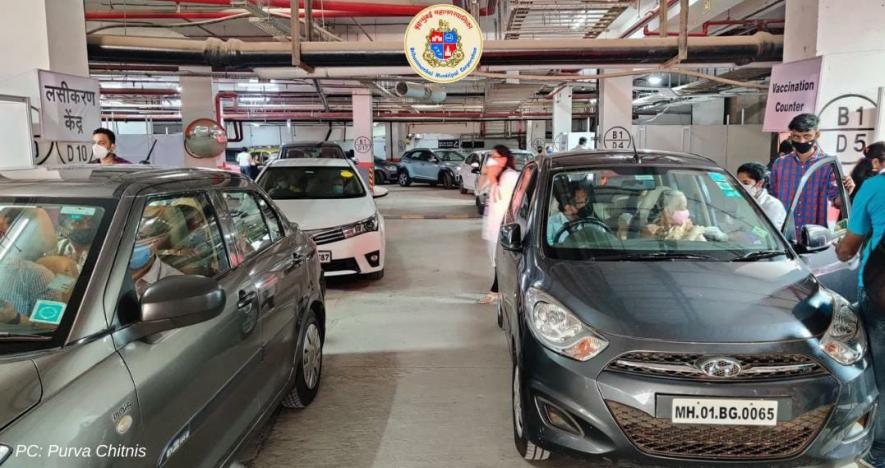
Drive in vaccination. Picture Credit: BMC
The BMC is run by the Shiv Sena. The Chief Minister of Maharashtra is the Shiv Sena party president and that has helped in smoothening out official processes. Over and above that however, the hard work of BMC staff is being seen on the ground.
Get the latest reports & analysis with people's perspective on Protests, movements & deep analytical videos, discussions of the current affairs in your Telegram app. Subscribe to NewsClick's Telegram channel & get Real-Time updates on stories, as they get published on our website.









